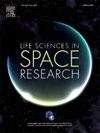Human thermoregulation in microgravity environments: Insights from a computational model
IF 2.8
3区 生物学
Q2 ASTRONOMY & ASTROPHYSICS
引用次数: 0
Abstract
A three-dimensional computational model of human thermoregulation has been developed to analyze body temperature distribution in microgravity. By incorporating appropriate modifications, the model effectively captures physiological changes observed in microgravity, including fluid shifts, reduced blood flow, metabolic changes, musculoskeletal adaptations, impaired sweating, and environmental effects. Comparisons with experimental data across various physical and environmental conditions demonstrate that the model effectively predicts the body core and skin temperature distribution. Results indicate that microgravity exposure consistently increases core body temperature (CBT) across all conditions, with fluid shifts being the most significant factor influencing thermal balance. Exposure to hot environments posed the greatest risk, as it caused a more pronounced rise in body temperature compared to cold and normal conditions. Predictions in a microgravity environment are compared with available space station experimental data from astronauts, showing strong agreement and confirming the model’s accuracy.
微重力环境下人体体温调节:来自计算模型的见解
建立了人体体温调节的三维计算模型,用于分析微重力环境下的体温分布。通过加入适当的修改,该模型有效地捕捉了微重力下观察到的生理变化,包括流体变化、血流量减少、代谢变化、肌肉骨骼适应、出汗受损和环境影响。与不同物理和环境条件下的实验数据对比表明,该模型能有效预测人体核心温度和皮肤温度分布。结果表明,在所有条件下,微重力暴露都会持续增加核心体温(CBT),流体变化是影响热平衡的最重要因素。暴露在炎热的环境中风险最大,因为与寒冷和正常环境相比,炎热的环境会导致体温明显上升。将微重力环境下的预测与宇航员提供的空间站实验数据进行比较,显示出强烈的一致性,并证实了模型的准确性。
本文章由计算机程序翻译,如有差异,请以英文原文为准。
求助全文
约1分钟内获得全文
求助全文
来源期刊

Life Sciences in Space Research
Agricultural and Biological Sciences-Agricultural and Biological Sciences (miscellaneous)
CiteScore
5.30
自引率
8.00%
发文量
69
期刊介绍:
Life Sciences in Space Research publishes high quality original research and review articles in areas previously covered by the Life Sciences section of COSPAR''s other society journal Advances in Space Research.
Life Sciences in Space Research features an editorial team of top scientists in the space radiation field and guarantees a fast turnaround time from submission to editorial decision.
 求助内容:
求助内容: 应助结果提醒方式:
应助结果提醒方式:


